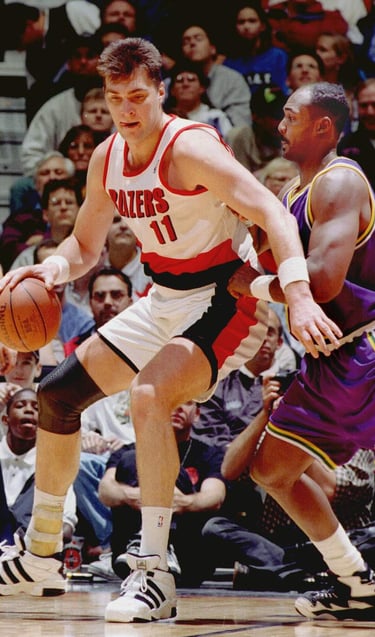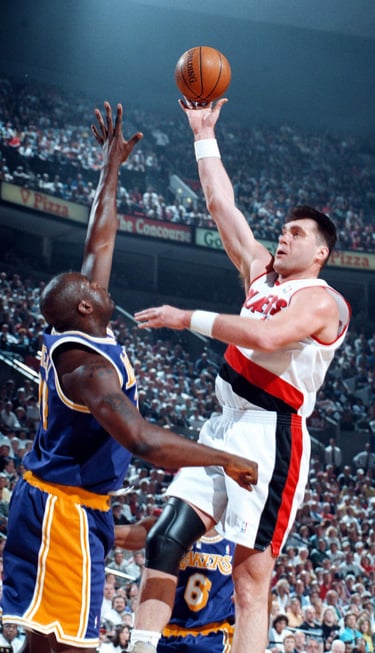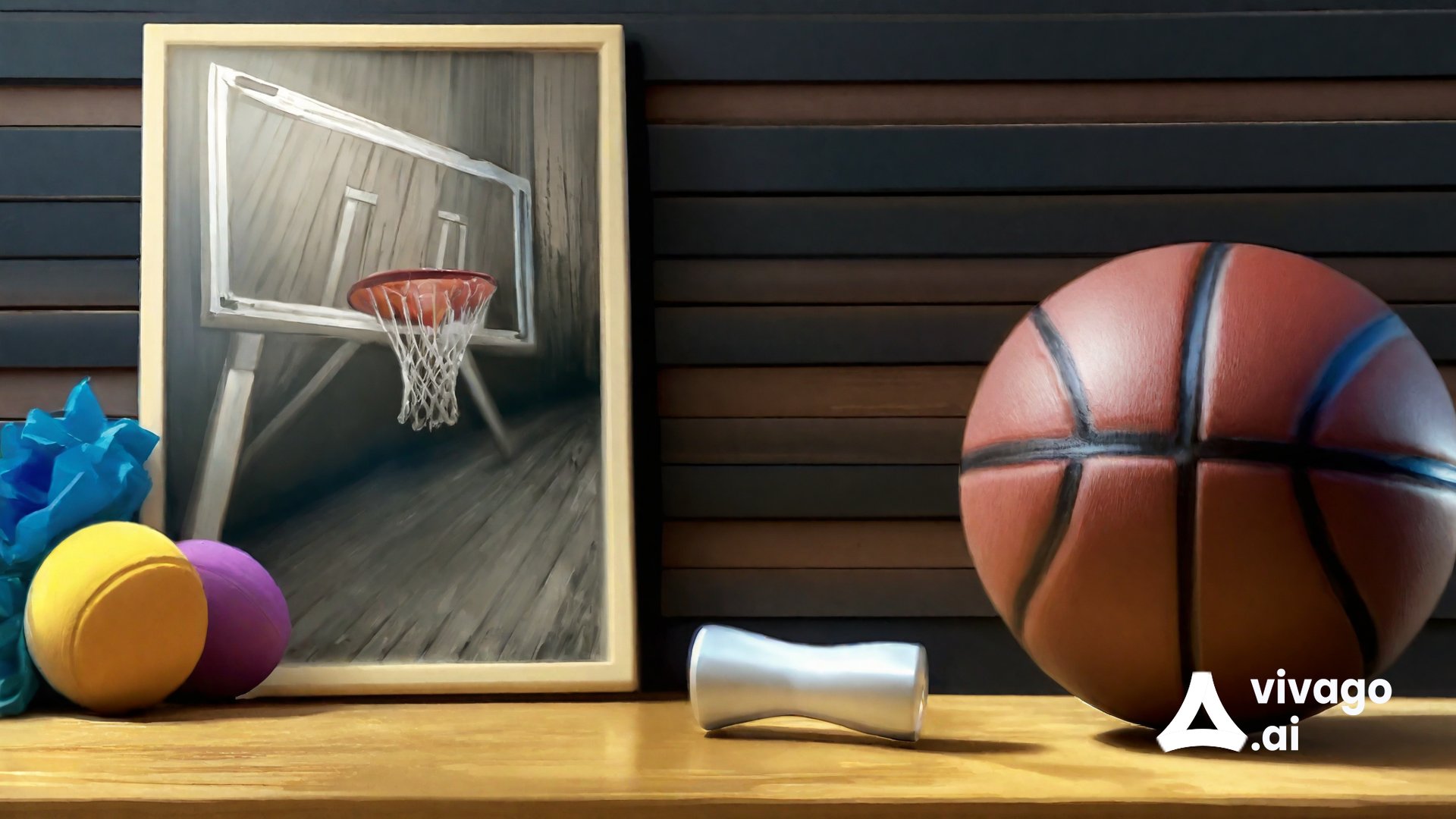
Arvydas Sabonis
"A Freak of Nature."
RETROPLAYERS
Antreas Tsemperlidis
12/19/20247 min read
Think of a player in contemporary European basketball who you believe dominates the game, instils fear in their opponents, exudes confidence among their teammates, all at the same time. It takes some thought, doesn’t it? However, in the magical decade of the 1980s, the answer was straightforward. Three basketball players terrorized European courts: Nikos Galis, Dražen Petrović, and the one celebrating his 60th birthday today (December 19th) , Arvydas Sabonis.
People nowadays consider Nicola Jokic, the “Joker” as the epitome of a player that does everything in offense with great shooting from any range, flashy & jaw dropping passes combined with a low post presence. All while being an excellent rebounder, dictating tempo and most importantly deciding the outcome of games. Well, what if you add unique physical attributes and excellent defence on top of that? Cause that’s what the original “Joker” really was. So let's roll back the years a bit...
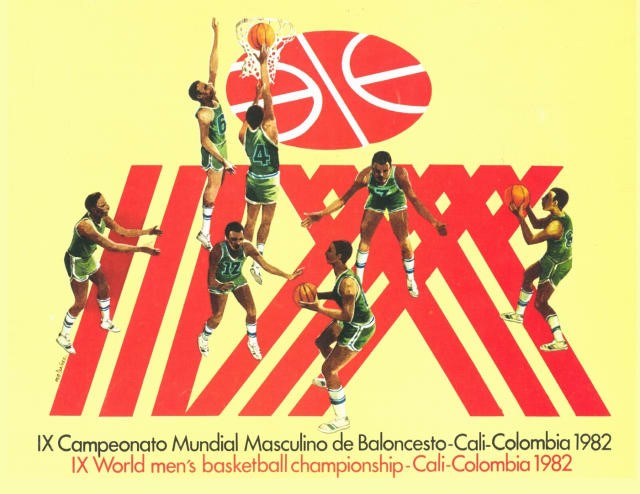

The story begins in the distant 1981 at the European Youth Championship games held in Katerini, Greece, where the giant from Kaunas made his international debut, showcasing early signs of the brilliance we would witness in the coming years. Alongside future national teammate Valery Tikhonenko, he led the Soviet Union to a gold medal. Critics however were cautious, unsure if Sabonis could succeed at the senior level. Those critics would be silenced though and questions would be answered emphatically the following summer at the FIBA World Championship in Colombia. Basketball enthusiasts watched in awe as a 2.21-meter player displayed unprecedented skills.
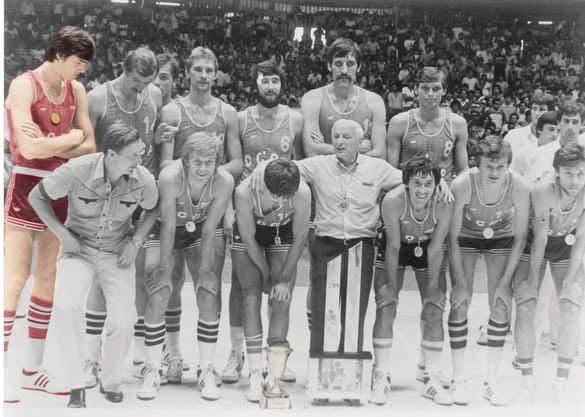

At a time when centers rarely ventured outside the paint, Sabonis brought long-range shooting, playmaking akin to a point guard, unmatched speed in transition, and unstoppable moves near the basket. On defense, his agility and long arms turned him into a defensive fortress. He redefined the center position, leaving opposing coaches scrambling for strategies to contain him.
Naturally, the Americans took notice despite logistical challenges in scouting him, relying solely on international tournaments. And each time, Sabonis left them amazed. They eagerly anticipated the 1984 Los Angeles Olympics, where he was expected to face Patrick Ewing, but political tensions prevented the Soviet Union's participation. Meanwhile, Sabonis starred with his beloved Žalgiris Kaunas, breaking CSKA Moscow's dominance by winning the Soviet Championship in 1985—the first of three consecutive titles. That summer, he also earned MVP honors at EuroBasket 1985 in Stuttgart, leading the Soviets to gold. He will try to do the exact same thing at club level, reaching the 1986 Champions Cup final against Cibona, but the punch he will throw at Mihovil Nakić will lead to his ejection and Zalgiris' defeat.
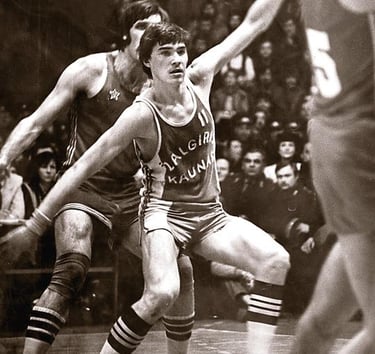

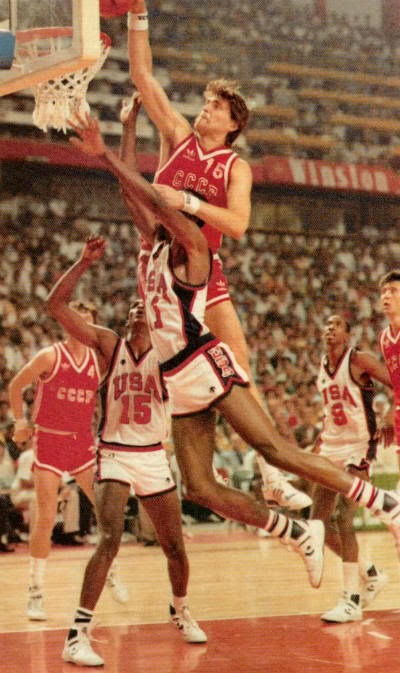

The chance for redemption will come at the FIBA World Cup in Spain. In the semifinal between USSR & Yugoslavia, a three-pointer of his will spark the most unlikely of comebacks in a game that appeared beyond reach and lead his team to the final. This would turned to be his first showdown with America's rising star, David Robinson, and despite the Soviet defeat, he will win widespread admiration. He is in the best form of his career, regarded as Europe's top center and one of the greatest basketball players of the continent. Everything seems perfect. Right when everything appeared to fall in line for the Lithuanian Freak of Nature, out of nowhere comes the collapse.
In the fall of 1986, would suffer severe Achilles tendon injuries on both legs. In an era of rudimentary sports medicine, such injuries often ended careers. Rumors swirled—some blamed the grueling training regimes of Soviet coach Alexander Gomelsky, while others indulged in outlandish conspiracy theories among them suggesting that "Sabonis was caught taking PEDs" or " Sabonis underwent surgery to increase his height." So be it... The Cold War environment of the times and the lack of reliable information fostered such baseless rumors.
The Portland Trail Blazers undeterred by Sabonis’ injury, used their 24th pick in the 1986 NBA Draft to select him as his 1985 selection by Atlanta was voided due to the fact that he hadn’t met the minimum age of 22 for non-U.S. players at the time. They invited him to Portland and offered medical support for his recovery. To everyone’s surprise, the Soviets allowed Sabonis to travel to the U.S. The Blazers’ staff stood by him and ultimately salvaged his career, unwittingly influencing the global basketball landscape with their actions. By then, it was already 1988. Sabonis had been absent from the courts for two years and was nearly forgotten.
Gomelsky included him in the roster for the Seoul Olympics, pressuring him to play despite his obvious lack of readiness. However, basketball instincts don’t fade, and in Korea, the “Freak of Nature” (a phrase coined by Kostas Riggas) silenced his doubters. After a slow start in the tournament, he found his rhythm, though it was clear he moved more heavily and was cautious about his legs. Perhaps this led U.S. coach John Thompson to assume that his star center, David Robinson, wouldn’t face much difficulty in the semifinal. But Sabonis was determined to prove he was back. He dominated the American, played with unmatched passion, and reminded the world of his dominance on both ends of the court. He carried this form into the final, looking unstoppable against the Yugoslavian frontcourt. The Olympic gold medal was the ultimate reward for Sabonis and proof that he was far from finished as a player. His dominance greatly alarmed the Americans, prompting NBA Commissioner David Stern’s push for professional players’ inclusion in FIBA tournaments and eventually leading to the creation of the Dream Team. Unintentionally, Sabonis personified a seismic shift in basketball history. The following summer, in 1989, Sabonis delivered a stellar performance at the EuroBasket in Zagreb. In the semifinal against Greece, he led his team with 19 points and 18 rebounds, but Nikos Galis’ scoring brilliance and Fanis Christodoulou’s clutch shooting forced Sabonis to settle for the bronze medal.
The basketball world eagerly awaited his decision about the next step in his career. In a gesture of goodwill, the Soviet Federation, honoring Gomelsky’s promise, had allowed their stars to join clubs outside the USSR. Many expected Sabonis to follow his friend Šarūnas Marčiulionis to the NBA, and the Blazers were ready to welcome him with open arms. However, in a move that stunned Europe, he chose Spain and the relatively lower-tier team of Forum Valladolid. This decision crushed the hopes of Greek fans, despite then-AEK Athens owner Makis Psomiadis’ claims that he had secured Sabonis’ transfer after a game against Zalgiris (most likely a fabrication of his).
During his three years in Valladolid, Sabonis led the team to its best run in their history, earning himself a transfer to Real Madrid in the summer of 1992. Before starting the league, however, there were the national team fixtures with the newly formed Lithuanian squad for the historic for basketball Barcelona Olympics. The Soviet Union no longer existed, and Sabonis, who never felt as a Soviet (it is said that he admitted to never singing the USSR anthem), led the spirited Lithuanian team to a bronze medal. In the semifinal against the Dream Team, Sabonis faced Robinson again but couldn’t match the Americans’ overwhelming superiority, losing by 51 points. In the bronze medal game against the “Unified Team” (comprised of former Soviet players), Sabonis exploded with 27 points and 16 rebounds, securing the medal for Lithuania.
He was now fully prepared for the challenge at Real Madrid, where he delivered spectacular performances. Initially, the successes were only domestic, with consecutive league titles in 1993 and 1994. However, Real Madrid sought to reclaim the European throne, which evaded the team since 1980. In Athens in 1993, they fell to Limoges’ stifling defense, but their moment came on Spanish soil. At the 1995 Final Four in Zaragoza, Obradović’s team, featuring Europe’s best frontcourt duo (Sabonis and Arlauckas), defeated Olympiacos, with Sabonis taking home the MVP award. Having nothing left to prove in Europe, he finally decided to make the leap to the NBA at 31 years old.
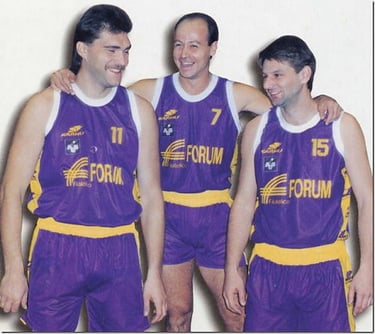
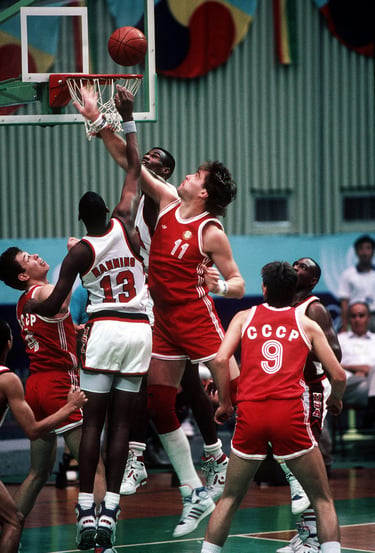
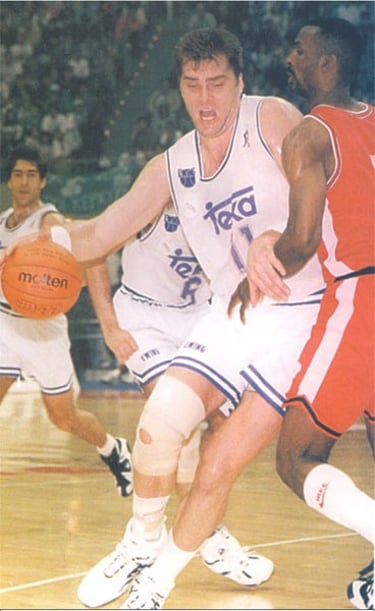
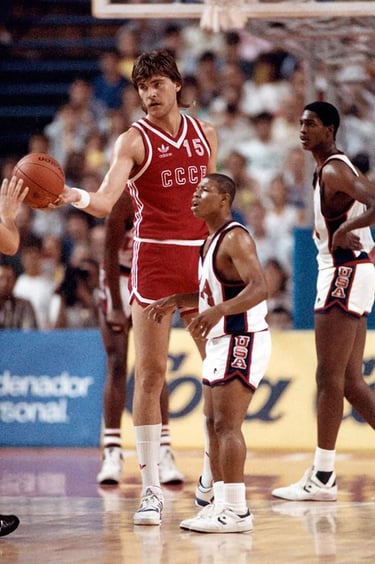
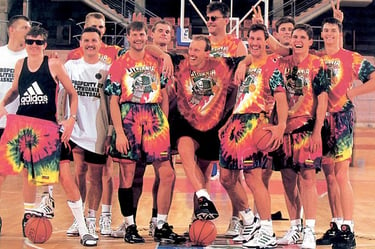





Once he set foot on American soil, Portland’s medical staff was utterly shocked by the results of his lab diagnostic tests, as his legs were nearly destroyed. Scepticism surrounded Sabonis’ ability to handle the NBA’s intense schedule. But soon enough he proved everyone wrong. He joined the team and night after night battled the league’s best centers during an era dominated by big men. The outcome? Rookie of the Year candidate, a Sixth Man of the Year nominee, part of the NBA All-Rookie First Team, and a participant in the Rookie All-Star Game. Yet, the lingering question remained: how different might NBA history have been if Sabonis had avoided serious injuries and joined the league in 1986? Sabonis ultimately spent seven seasons in Portland, with his best year being his third one, averaging 16 points and 10 rebounds. By his final season, his role had diminished due to age. He retired from the NBA, citing mental and physical exhaustion. Despite the strenuous NBA schedule, he always answered the call for his beloved national team of Lithuania, earning a silver medal at the 1995 EuroBasket and a bronze at the Atlanta Olympics of 1996. His last major tournament was the EuroBasket of 1999 in France at age 35. After retiring from the NBA, he played one final season with his first team, Zalgiris Kaunas, before officially retiring in 2005.
His individual accolades are countless, including six European Player of the Year honours, and of course membership in the Naismith Hall of Fame – class of 2011.
The final verdict on Sabonis? Strange as it may sound, he is one of basketball’s greatest “what-ifs.” Perhaps the most extraordinary physical speciment ever to grace the game, hindered by injuries that prevented him from reaching his full potential. Yet, even so, his incredible court vision, insane basketball IQ, and sheer determination to overcome the challenges that came along the way, have secured him a spot among the greatest players of all time and basketball immortality beyond any doubt. To me personally, he remains the best I’ve ever seen at his position, nothing less than the greatest European center ever.
